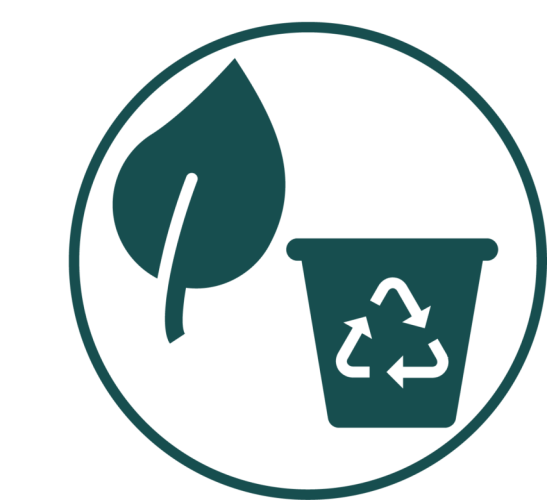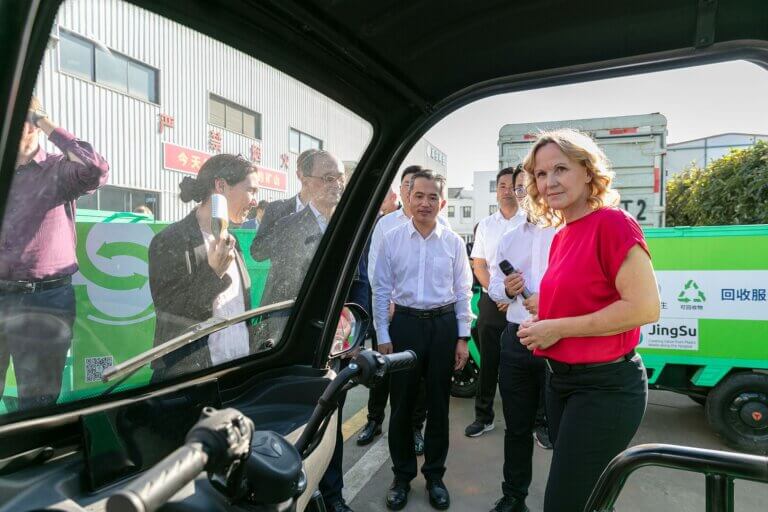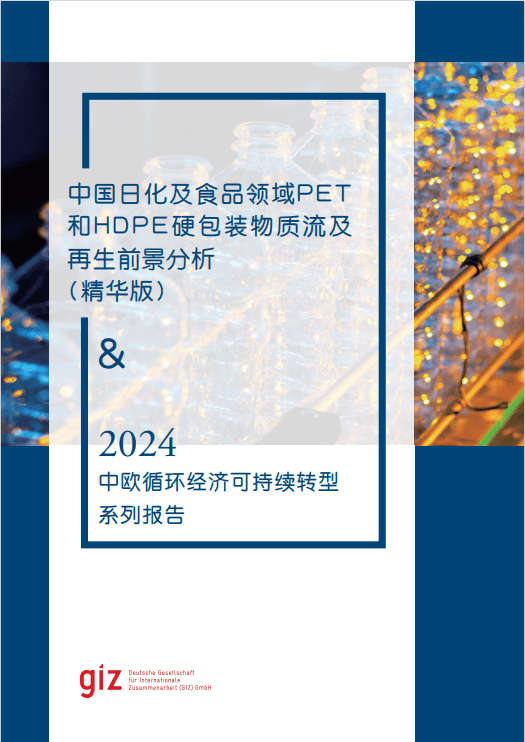In November 2020, the project team of Integrated Waste Management NAMA Support Project (IWM NSP) and technical experts jointly completed the KPI assessment and greenhouse gas emission reduction monitoring in the municipal solid waste management (MSWM) sector for 2020 in five demonstration municipalities.

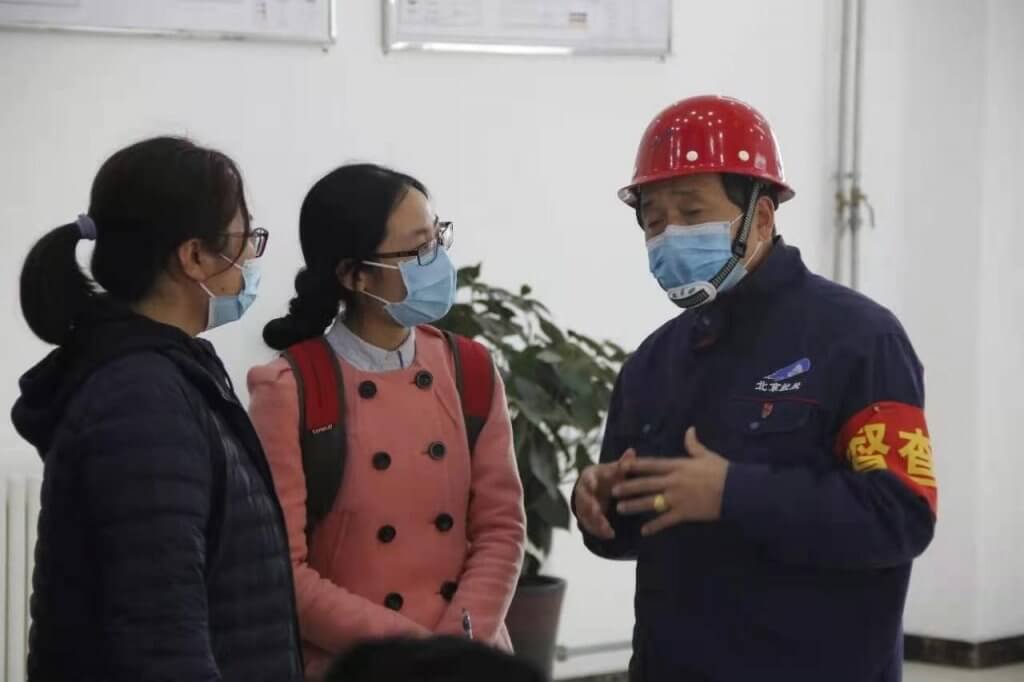
IMPROVED WASTE MANAGEMENT IN DEMO CITIES
In the year of 2020, the MSWM has achieved a better performance in all demonstration municipalities. With the implementation of waste segregation, the legal framework and executive agencies for waste management in local cities was gradually improved. The recycling rate has made some progress in the last year, which can be seen in the statistical work of the cities Suzhou and Xi’an. Since waste segregation and treatment infrastructure have been put into operation and technologies were upgraded, the whole MSWM system in the local areas is becoming more considering different stakeholders.
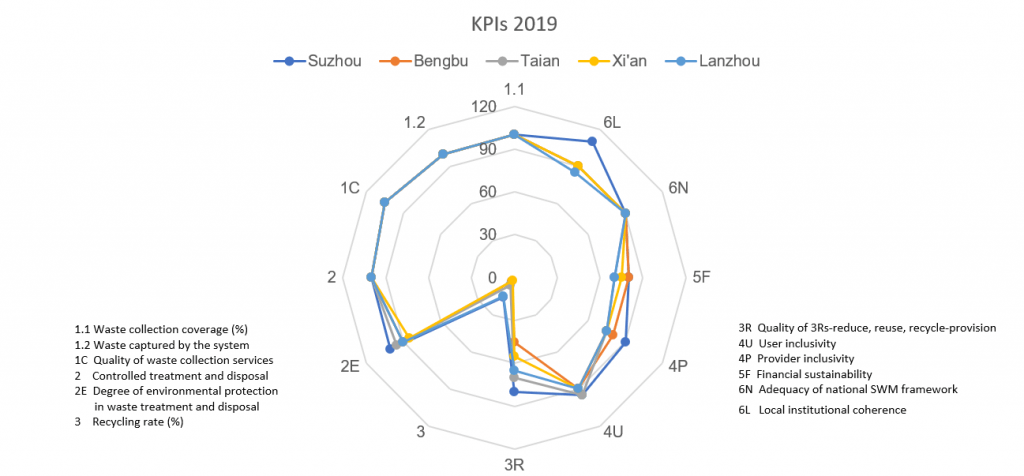
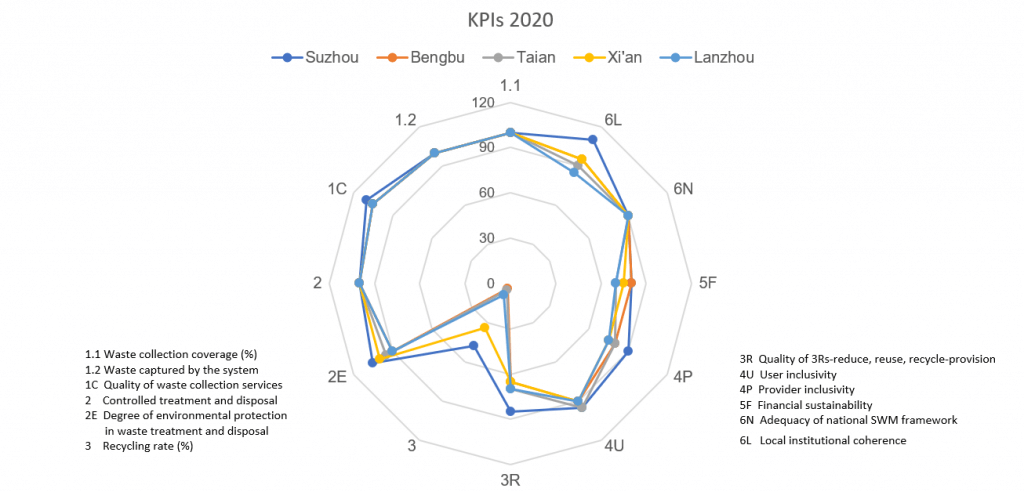
INCREASED GHG EMISSION IN TOTAL WITH VARIETIES IN CITIES
The carbon emission reduction of demo cities in the monitoring period from November 2019 to October 2020 amounted to 2,097,472 tCO2e. In comparison to the baseline situation (average amount from 2015 to 2017), the project has achieved a total GHG emission reduction of 2,589,977 tCO2e during its implementation period, equivalent to the emission reduction through afforestation of 1,800,000 mu[1].

Due to the different initial situation of waste management, the carbon emission reduction differs within the demo cities. Until November 2020, the transition from landfill to waste incineration was the main contributor to the carbon emission reduction, which was a common practice in Xi’an and Bengbu. Currently, the incineration of all “other waste” and zero landfill of collected MSW generated in demo areas has been realized. However, the carbon emission reduction potential in the future lies in the separate collection and treatment of kitchen waste, as well as the calculation and increase of recycling rates for recyclables.
NOTICABLE CHANGES OF MSW COMPOSITION
With the continuously developing living standard and lifestyle, plastics saw a significantly increase in MSW, which brings new challenges for the operation of waste incineration plants. If the energy efficiency cannot be further improved, the carbon emission density will grow, leading to a neutralization of existing carbon emission reduction benefits of incineration plants.
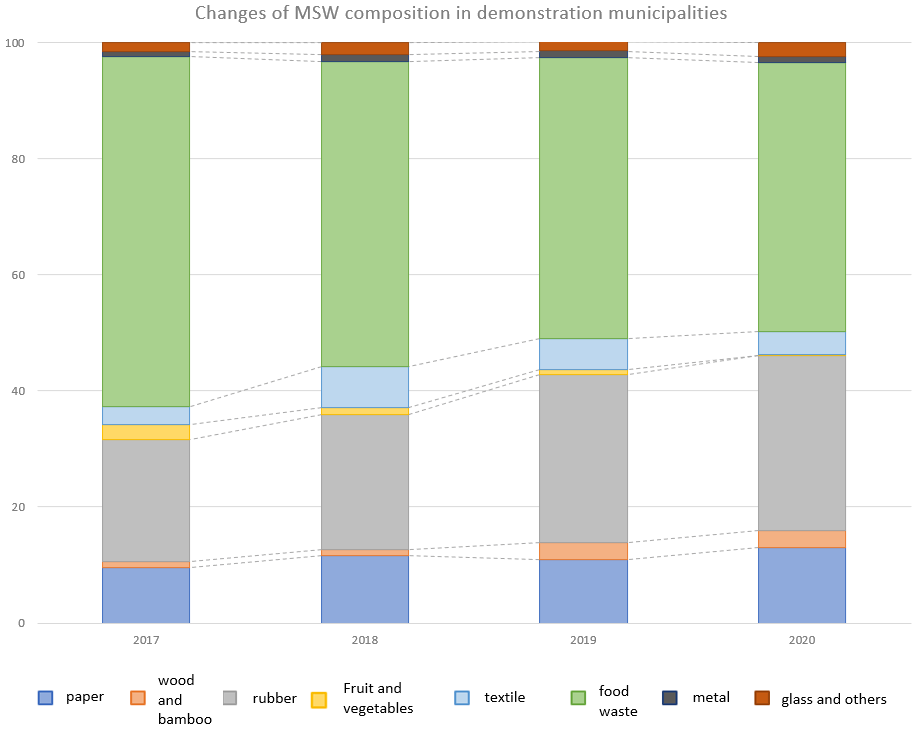
To sum up, taking the waste segregation as the first step, the waste management sector could improve the resource utilization and energy efficiency, as well as achieve the goals of reduction, recycling and harmless disposal through high-quality development and sound management of the whole sector. As a result, the waste management sector could not only become carbon neutral but also contribute to the 2060 carbon neutrality strategy in terms of carbon emission reduction.
[1] 1 mu is about 0.067 hectare; the carbon sink capacity is estimated of 0.7 ton CO2e/mu per year, from the Chinese Certified Emissions Reduction (CCER) projects in China
